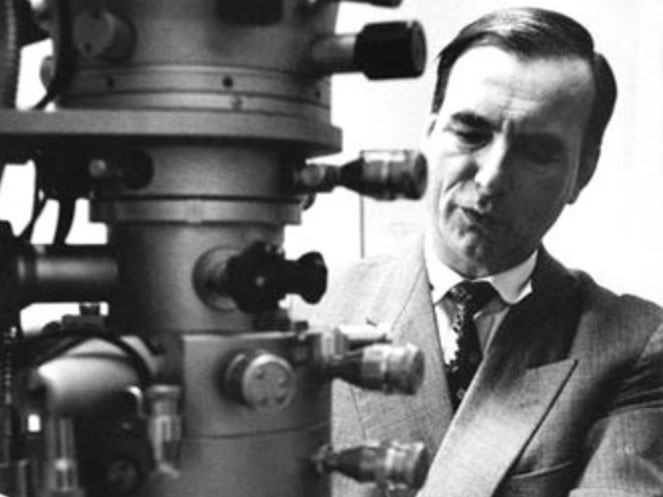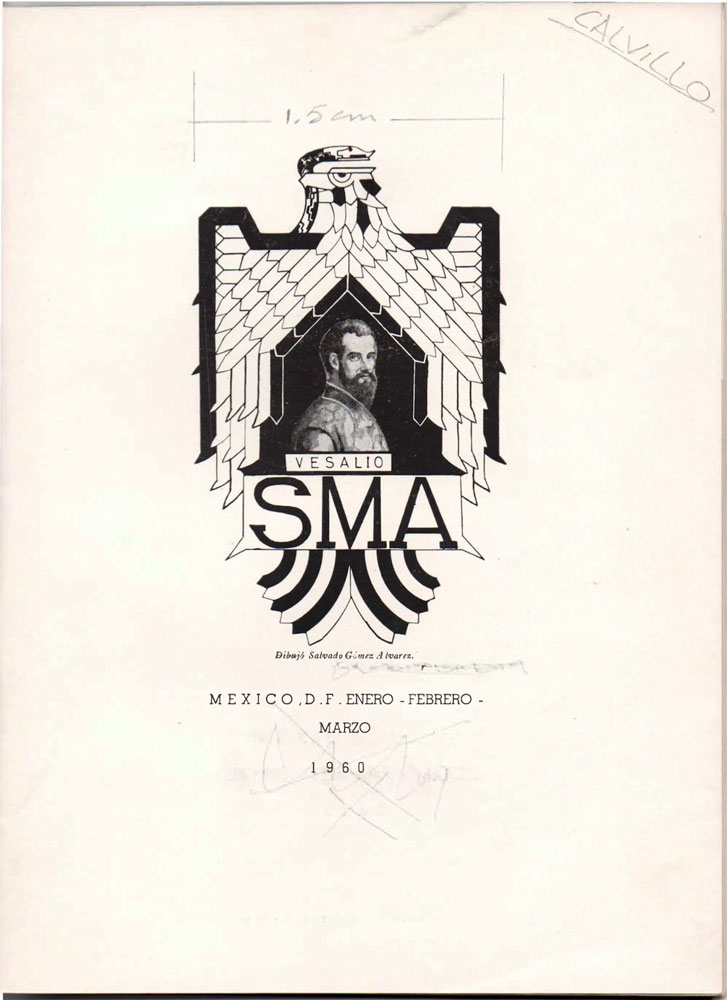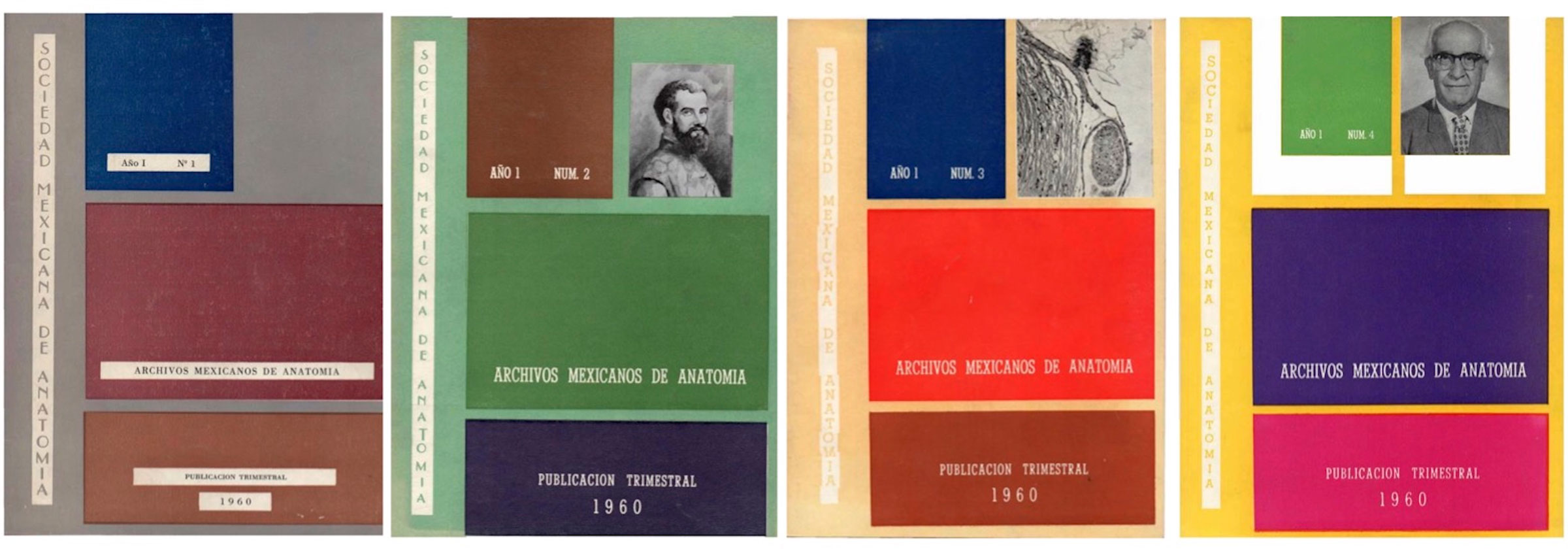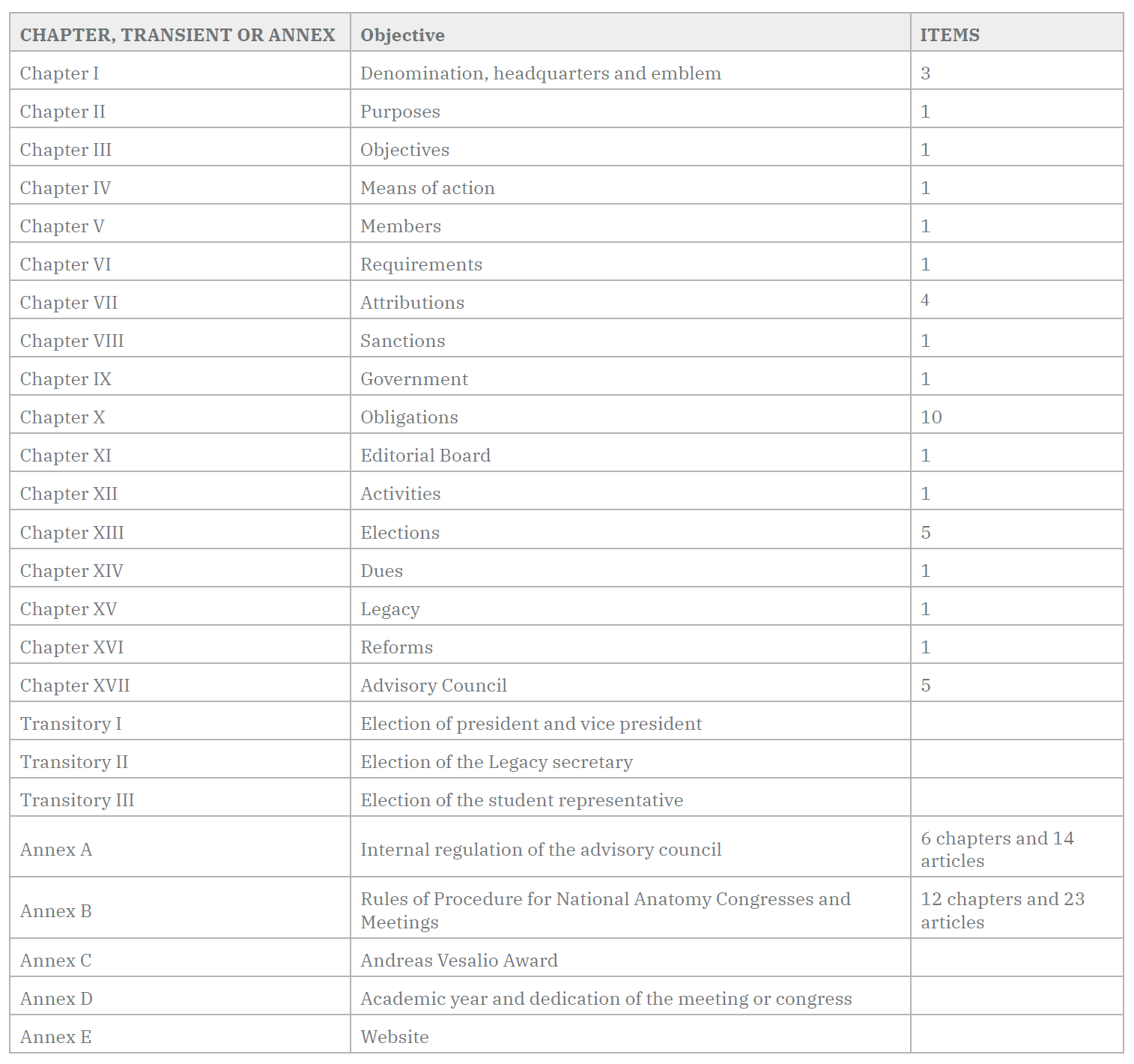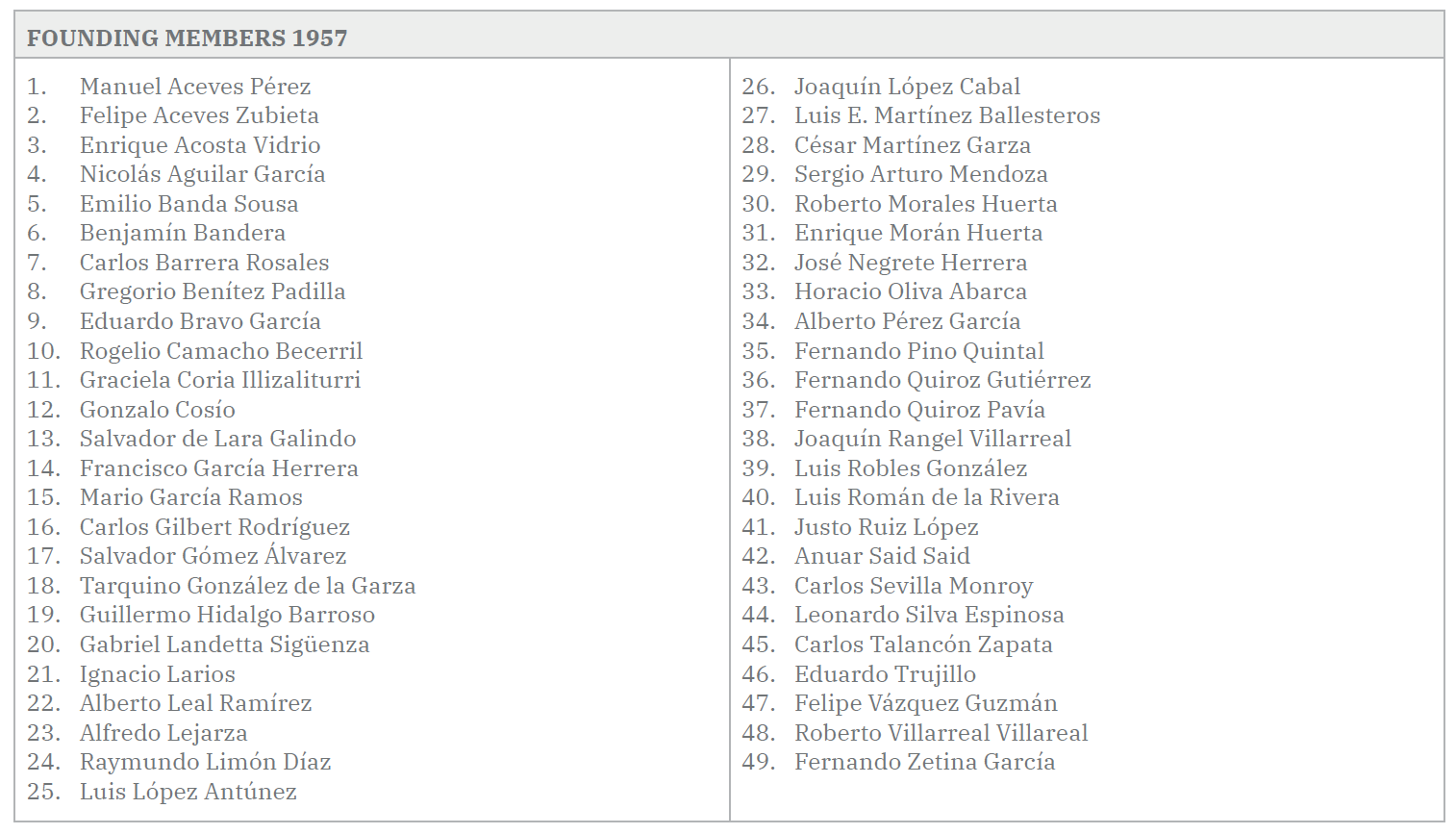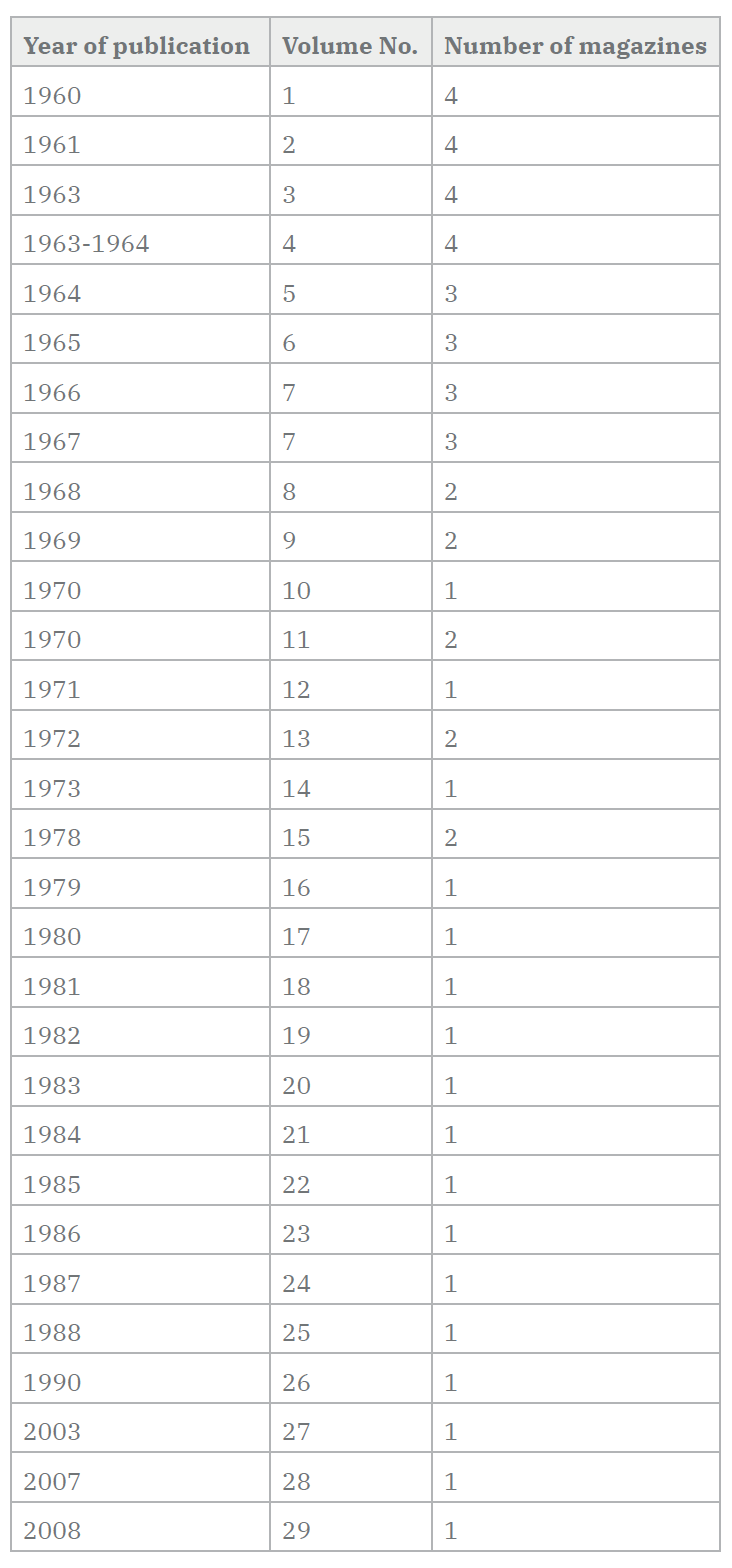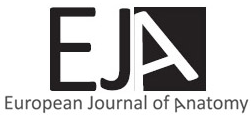Summary
The Mexican Society of Anatomy (SMA) was founded in 1957. Since its creation it has been composed of the most prestigious morphologists in the country, who have achieved a solid and widely recognized society within and outside our borders.
Within a few years of its founding, the creation of the magazine entitled Archivos Mexicanos de Anatomía (Mexican Archives of Anatomy) was promoted, with quarterly publications that began in 1960, and whose last issue was in 2008 already in digital format.
Since its founding, the society has had 30 presidents whose main function has been to promote morphological sciences at national and international level, so during their biennial terms, according to the Statutes of the Society, they have been in charge of monthly meetings where the most current topics concerning morphological sciences are discussed, as well as the organization, together with their boards of directives, of 28 National Congresses of Anatomy, 23 National Meetings of Morphology, 12 National Student Morphology Competitions and 2 Regional Student Competitions.
Since 1961, as the statutes of the SMA point out, during each congress or meeting the "Andreas Vesalio Award" has been conferred, and since 2003 another distinction was added, called "Dedication of the Academic Year", as the highest awards and public recognition to the morphologist or institution that stands out for its contributions and dedication to this discipline. Finally, it is important to highlight the growth that the society has had: it started with the participation of 49 founding members and it currently has 101 numeral members, 1 honorary member, 7 corresponding members, 89 student members, with a total of 198 members.
Introduction
On the eve of the celebration of the sixty-fifth anniversary of the Mexican Society of Anatomy, the authors of this publication have given us the task of recapitulating the most important events that have made our society a space for dialogue, teaching, coexistence and exchange of experiences of lovers of morphological sciences, and that have therefore made them a very important part in their professional and personal life.
Since it is the only Society of Anatomy in Mexican territory and one of the most important in Latin America, the purpose is to document and witness to the legacy they receive, and which the new generations of the different members of our society must take care of. With them it is with whom we want to share these historical facts, because by expressing their passion for morphology, they will have an interest in knowing who they were and who are the social and academic actors that have conducted the development of the society at different historical times.
Founding of the Society
The SMA was founded in 1957, and since then activities have been carried out uninterrupted to this day (Sociedad Mexicana de Anatomía, 1960-1). These activities have always been framed in accordance with their statutes, which can be summarized as follows:
- Promoting the study of Human Anatomy and related sciences.
- Encouraging anatomical research.
- Consolidating the study of anatomical disciplines as the primary basis for medical science teaching.
- Fighting for the training of Career Masters in anatomical sciences.
- Advocating the selection of teachers from qualified professionals.
- Promoting scientific exchange and rapprochement with other societies or institutions.
The SMA has grouped in a single body all teachers and researchers of the morphological disciplines in Mexico, as well as the professionals whose activity favors them directly or indirectly.
Statutes
Since its origins, the founding members established the statutes that govern us and dictate the objectives of our society, as well as the mechanisms of action to achieve them.
Similarly, these statutes clearly set out the rights and obligations of the different types of members that make up society (Sociedad Mexicana de Anatomía, 2020).
However, these statutes with just over half a century of life have been over the way in some respects by technological advancement and the current life of the world of academia and science, so in 2010 changes were revised and approved into new statutes: originally consisting of 15 chapters and 25 articles, the contents are now as follows: 17 chapters, 40 articles, 3 transients and 5 annexes, which we summarized in Table 1 (Sociedad Mexicana de Anatomía, 1960-1).
It is very important to mention that this society takes anatomy, embryology, histology and neuroanatomy as its fundamental pillars, and includes other disciplines such as anthropology, dentistry, biology, comparative anatomy, nursing, surgery, imaging, among many others.
Founding Members
Since its creation, the Society has gathered the best-known morphologists in the country, who have managed to make it a solid and widely recognized society within and outside our borders. Among these 49 notable academics a number of outstanding names can be highlighted: Dr Fernando Quiroz Gutiérrez, Dr José Negrete Herrera, Dr Gregorio Benítez Padilla, Dr Salvador de Lara Galindo and Dr Luis López Antúnez, who through their works and contributions have managed to train many generations, as some of these books continue to be part of the mandatory literature in some educational institutions (see Table 2).
Official Emblem
The original drawing of our emblem was made by Salvador Gómez Alvarez and became the official emblem of the Mexican Society of Anatomy since its foundation in 1957, being officialized in 1960 in the first issue of “Mexican Archives of Anatomy”.
The official emblem is an ensemble that consists of the image of a stylized eagle. In the center of that image is the figure and the name of Andreas Vesalius, the father of modern anatomy. Forming the base of the emblem is the acronym: SMA corresponding to Mexican Society of Anatomy. This emblem reminds us of our foundation and perennial values of this great society (Sociedad Mexicana de Anatomía, 1960-1) (Fig. 1).
Former Presidents of our Society
The first president of the Mexican Society of Anatomy and founding member of the society was Dr Fernando Quiroz Gutiérrez (1957 to 1959), author of the book of Human Anatomy that remains the official text of many universities inside and outside Mexico. He has been followed by a good number of morphologists, who with the staff very high, have managed to consolidate our society and place it at the level it is now. We have a great debt to all of them, as well as to their collaborators, who integrated the respective boards that, with their quiet but fundamental work, made each of the activities of society a success and a step forward of Mexican morphology. Since its founding, these have been the presidents (Sociedad Mexicana de Anatomía, 2020):
- 1957-1959 Fernando Quiroz Gutiérrez
- 1959-1961 Enrique Acosta Vidrio
- 1962-1963 Mario García Ramos
- 1964-1966 Fernando Quiroz Pavía
- 1967-1968 Salvador de Lara Galindo
- 1969-1972 Salvador Gómez Álvarez
- 1973-1974 Gildardo Espinosa de Luna
- 1975-1976 Alicia Álvarez Ramírez
- 1977-1978 Luis Cárdenas Ramírez
- 1979-1980 Manuel Granados Navarrete
- 1981-1982 Carlos Gilbert Rodríguez
- 1983-1984 Joaquín Reyes Téllez-Girón
- 1985-1986 Felipe Zaragoza Flores
- 1987-1988 Cassandra Núñez Tovar
- 1989-1990 Ismael Herrera Vázquez
- 1991-1992 Natalio González Rosales
- 1993-1994 Eugenio Alfredo Millán Dena
- 1995-1996 Luis Delgado Reyes
- 1997-1998 Armando Pérez Torres
- 1999-2000 Andrés Castell Rodríguez
- 2001-2002 Enrique Canchola Martínez
- 2003-2004 Patricia Herrera Saint Leu
- 2005-2006 Virgilio W. Escalante Silva
- 2007-2008 S. Manuel Arteaga Martínez
- 2009-2010 Manuel Ángeles Castellanos
- 2011-2012 Miguel Herrera Enríquez
- 2013-2014 María Isabel García Peláez
- 2015-2016 William Ortiz Briceño
- 2017-2018 Antonio Soto Paulino
- 2019-2020 Rodrigo E. Elizondo Omaña
- 2021-2022 Diego Pineda Martínez (Current)
Creation of “Mexican Anatomy Archives”
For the first time in Mexico, a publication specializing in the different branches of anatomy was considered to the medical class. It appeared in 1960 and became the official journal of the Mexican Society of Anatomy with the title Mexican Archives of Anatomy (see Fig. 2). It pursued the objectives of enduring, growing, improving, consolidating bonds and friendships, providing the Mexican and foreign medical class with another means of expression and dissemination, contributing to the uncontainable progress of science for the benefit of Mexico and Humanity.
The journal continued from 1960 to 1973 where it was discontinued for 5 years, resuming its regularity until 1988. Unfortunately, its last digital issue was in 2008 (see Table 3).
Below we cite the words written in the first issue of the journal, which reflect the spirit and impetus that made it grow for many years, and which should be an inspiration to revive:
"The urgent need for its emergence, coupled with our classic hardship, made the magazine's material presentation does not fit with much, all our aspirations: we want it better, with more issues, more pages available and a higher frequency. For this we need and ask for the collaboration of all the members of the Mexican Society of Anatomy, of all the scientists and philanthropists who want to help a noble and future cause". (Sociedad Mexicana de Anatomía, 1960-1).
National Congresses and Meetings
Perhaps one of the greatest challenges that presidents have had along with their executive boards, but also one of the most enriching functions, is the organization of national conferences and meetings that have allowed the exchange of knowledge, new collaborations between different institutions and scientific discussions, among many others. Without a doubt it is the space that gives student members the opportunity to present their works and interact with the various authors and leaders of morphological sciences related to their bachelor's degrees. It is a high motivation to sow in them a passion for morphological sciences and academy.
It is very important to mention that for several years the SMA has had exponential growth, especially concerning attendance at congresses and meetings, which by statutes have continued to be called "national", but which should actually be called “international”, since in recent years there has been an average participation of 10 countries, in addition to being held in conjunction with the Pan-American and global congresses. (see Table 4).
Recognitions Granted
This award is the highest award given by the SMA in each of its National Congresses or Meetings. It has the purpose, as indicated by the statutes of our society, to "publicly and in a special way signify the recognition and gratitude to the Professor or Institution who, in the teaching of Morphology in our national environment, marks an age greater than twenty-five years or that for its contribution, research and dedication to these disciplines, is a creditor to this award". It was first awarded to Dr Fernando Quiroz Gutiérrez in September 1961 as part of the First National Congress of Anatomy.
This award consists of awarding a medal with the engraved image of Andreas Vesalius and has been granted to the morphologists listed in Table 5.
- Dedication of the academic year
With the beginning of the new century, the acting board of directors of the society proposed and its members accepted to award a new distinction "Dedication of the Academic Year". With this distinction the Society intends to give a well-deserved recognition and gratitude for the morphologist, or institution that, in Mexico, has distinguished itself by its contributions in teaching, research and dedication in the different morphological disciplines.
This distinction was first awarded in 2003 and has since been awarded each year, with some particular exceptions, being as follows (Sociedad Mexicana de Anatomía, 1960-2):
- Year 2003 - (Dr. Manuel Granados Navarrete)
- Year 2004 - (Dr. Alicia Álvarez Ramírez)
- Year 2005 - (Dr. Gregorio Benítez Padilla)
- Year 2006 - (Dr. Gildardo Espinosa de Luna)
- Year 2007- on the occasion of the celebration of the 50th Anniversary of the founding of our society, this year was designated as the Year of the Fiftieth Anniversary, intended to recognize in this way each and every member morphologist who have contributed to achieve what is now the Mexican Society of Anatomy.
- Year 2008 - (Dr. Luis López Antúnez)
- Year 2009 - (Dr. Carlos Gilbert Rodríguez)
- Year 2010 -(Dr. Amelia Sámano Bishop)
- Year 2011 - (Dr. Enrique Acosta Vidrio)
- Year 2012 - (Dr. Carlos Serrano Sánchez)
- Year 2013 - (XLVII Anniversary of the Pan American Association of Anatomy)
- Year 2014 - (María Elena Castillo Romero)
- Year 2015 - (Horacio Oliva Abarca)
- Year 2016 - (Salvador de Lara Galindo)
- Year 2017 - (Carlos Jesús Guzmán Cuervo)
- Year 2018 - (Dr. Santiago Aja Guardiola)
- Year 2019 - (Natalio González Rosales)
- Year 2020 – Not awarded due to the pandemic
Conclusions
For more than 60 years, the Mexican Society of Anatomy has been composed of leading national and international morphologists dedicated to the teaching and research of health and related sciences. Its common objective is to promote the updating of anatomy, neuroanatomy, histology and embryology, to encourage teachers and students to love these disciplines and thus integrate the new generations into national and international collaborative work, introducing them immediately to research and teaching. The history of our society has made it clear to us that the sum of efforts leads us to better professional and personal development. This is how we must have academic programs common to the needs of our time and services that offer the necessary means and tools for the transfer of information from our daily work, and thus bring together more members who have the same objective of disseminating the morphological sciences.
Finally, our vision in the future as part of the board of directors and members of the Mexican Society of Anatomy is to resume the edition of the journal Mexican Archives of Anatomy, and to be the official organ of the European Journal of Anatomy, allowing our members to publish in an indexed journal specialized in morphological sciences with the aim of giving opportunity to strengthen our own journal. This will strengthen ties with European, American and Latin American societies, giving us greater international projection.
During these months, the incorporation of our society into the International Federation of Associations of Anatomists (IFAA) will be formalized and we will promote the linkage with the Mexican Association of Faculties and Schools of Medicine (AMFEM) and the International Association of Medical Science Educators (IAMSE), seeking to be a consulting body to generate criteria or basic axes for the academic approval of programs studying morphological disciplines in the Schools and Faculties of Health Sciences in Mexico—this was one of the first objectives of our society since its foundation.
Given the high participation of international attendees that have registered in recent years in our congresses and meetings, originating in more than 10 countries, we consider it relevant to promote the discussion of changes in the statutes so that our congresses and meetings take character and are called "International".

